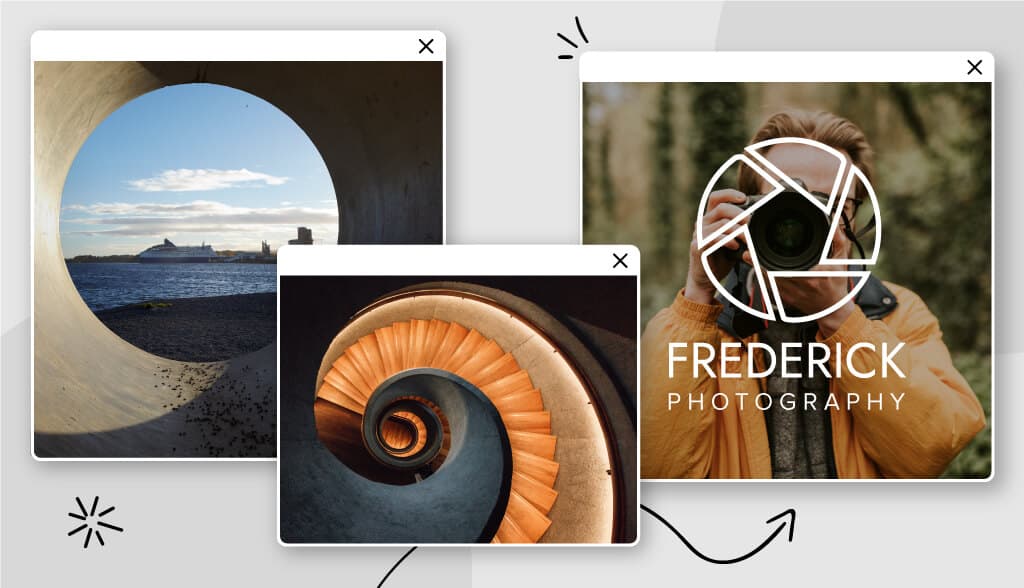The Symbolism of Circle Logos
Logo shapes hold meaning, and circles have long been used to represent unity. That’s why in many wedding ceremonies, people use the wedding band shapes to describe the unity of marriage.
Circles have no beginning, end or stopping point. Because of that, they often spark feelings of energy and vitality.
Circles also tend to represent completeness, harmony or unity. The earth is a circle shape; the sun, stars, moon and other planets all look like circles; fruits and vegetables sometimes take on a circle shape; and so do certain flowers and seeds.
Hope, growth, and even transformation are all embodied within a circle.
Lastly, circles are also visually pleasing. They have a softness that still offers classic stability. Many different objects can be turned into circles for an exaggerated icon, which we’ll see in some of the famous logos below.
Practical Benefits of a Circle Logo Design
For starters, circle logos are extremely convenient for both on- and offline branding. The circle logo fits into a square Instagram picture as easily as a circular social media profile picture, and it can easily be added to everything—from shirts to business cards and website banners.
Circle logos will also stand out better than angular logos. They contrast with the angular elements and grid of your design layouts on marketing materials, website, business sign, labels and more.
On that note, let’s look at 15 brands that are using their circular logos to spark confidence and interest in their audience!
15 Famous Logos That Use Circles
Here are 15 circle logos that are getting the job done:
Motorola
Extremely simple and geometric in nature, the Motorola logo is an easy one to remember on sight. The logo was changed from the brand name as a wordmark to the circle containing the “M” in 1955. Now, the logo has become a classic brand icon.
The sharp peaks of the “M” contrast with the smooth shape of the surrounding circle. They represent the brand’s aspiration to reach new heights.
And, the flat shapes make it extremely easy to reproduce the color and design on any material, surface or medium. Though often shown in a classing B&W color scheme, the Motorola logo is sometimes changed to different solid colors for various occasions.
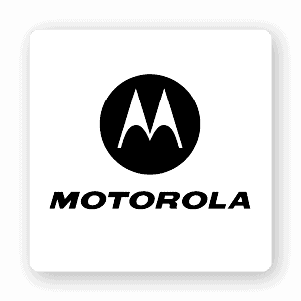
NASA
Did you know that the National Aeronautics and Space Administration (NASA) logo used now was created in 1959?
The circular logo of NASA clearly shows a background of a starry sky. The forefront of the logo sports the logotype “NASA” with a red chevron (that “V”-shaped mark) representing aeronautics as a wing or movement shape. Finally, there is an orbiting spacecraft going around the logotype and the wing to draw it all together and represent movement or travel.

ABC
After seven years of using the American Broadcasting Company logotype in a serif font, the TV station shifted towards a simple approach of the ABC letters on a circle.
The company has tried out some gradients and dimension for its logo over the years. In 2007, the logo got very shiny, and in 2013, the circle background shifted to a soft gradient.
The logo used today was created by Paul Rand, a forefather of modern graphic design. He applied his Swiss style to many major corporate brand logos, including IBM and UPS.

In 2020, this content pinning site reported 459 million monthly active users, and its logo hasn’t hurt the effort. The Pinterest logo is incredibly simple and has changed little from the launch of the brand in 2010.
The circle of the logo design, along with the “P” itself, are combined to represent a loosely drawn pushpin. This illustrates the idea of content being pinned to one convenient place with an easy-to-recognize logo.

Tide
Tide wants you to remember that your colors are going to hold fast when you use their brand. With this in mind, the logo uses some of the brightest and happiest colors (yellow and orange) as well as the contrasting royal blue to represent dependability.
The design of the Tide logo has changed very little since it was first created in 1946. The circles allude to a target, or could even represent a washing machine cycle. And, the outer yellow ring of the logo helps the logo stand out on the orange detergent bottle.
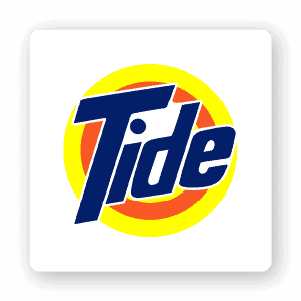
Spotify
The brand known for music, podcasts and other soundbites uses the circle logo to contain the soundwaves in its icon. Because they’re placed inside of a circle, the sound waves look like they are emanating from a speaker.
This smart and modern logo design change was a much-needed update to the brand logo in 2013. It was a drastic change, but it made a design callback by using the lines originally above the “o” in “Spotify” in their first logo.

HP
Shockingly, HP hasn’t changed its logo a lot since it first started in 1939. Back then, the colors were black and white, but the shape was largely the same. The blue logo used now represents a dependable, classic brand.
The circle nicely fits in the “hp” that breaks up the circle with the lines ascending and descending to the edge. This creates a visually interesting shape that helps keep the eye engaged longer.

Mozilla Firefox
As the parent brand of Firefox, Mozilla has applied the use of very direct imagery to its logo. The circular globe is inviting and looks peaceful, and the wrapped fox is reminiscent of flames, but takes on more of a fox shape and creates a concise icon for the browser app.
Over time, the logo has lost some of its realism. It transitioned from a blue globe to a violet and magenta sphere, and the fox has gone from an abstract mark to a smoother and less-detailed fox—always with a tale of edgy flames.

London Underground
The UK logo for the rapid transit system is as straightforward as logos come. The red circle grabs attention, and through the center passes a blue rectangular bar that looks like it could be a train, with the word “UNDERGROUND” in a white sans-serif font.
The logo uses the colors of the underground passenger Tube, which further connects the logo to the product. It also has the feel of a traffic sign and is instantly recognizable.
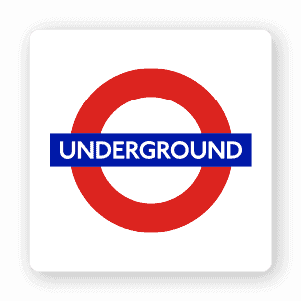
Virgin
What started as a record business has now grown to encompass 40 companies spanning 35 countries. This includes airlines, cellular service, cruise ships, hotels, satellites, sports betting and more.
The design has remained a very simple, hand-drawn logotype on a plain background. The Virgin Megastore, Virgin Life Care, Virgin Orbit, Virgin Money, Virgin Wines and other various pieces of the brand also use a circle to encompass their branched-off logo designs.
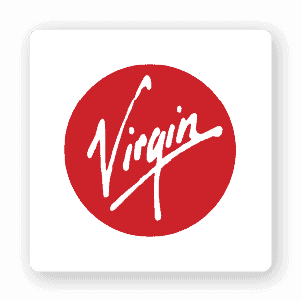
Target
One of the most iconic circle logos of all time is Target. The red and white circles are simple, bold, and literally illustrate the name of the brand. It’s easy to recognize and almost as easy to reproduce.

Timberland
The outdoor wear retailer uses a tree logo to depict the land where trees grow (timberland). As a circle logo, it kind of centers in on a simplified landscape and crops out part of the tree and the grassy field below it. The resulting shape is an implied circle.
With just one color used, the logo can easily take on any 2-tone color scheme (typically B&W or gold and black) with the background color making up one.
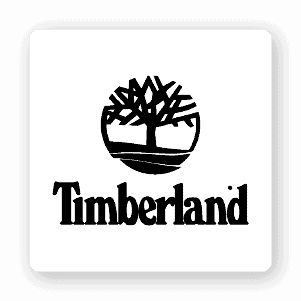
Schindler
Creating elevators and escalators, Schindler uses a 3D logo that echoes back to an elevator button with an arrow pointing up. After a series of dramatic logo changes, the current version was designed in 2006.
The company explains, “By being three-dimensional, it communicates dynamic movement. Its color reflects the utmost in technical precision and quality.”
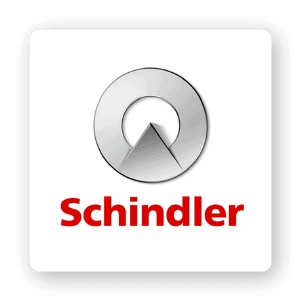
Starbucks
Another incredibly popular brand with a circular logo is Starbucks. With over 30k stores spanning 80 countries, the coffee house monolith has a logo that is more complex than most, but just as recognizable.
The siren (what some people mistake for a mermaid) has been simplified and cropped over time. In 2011, the brand decided they could drop the surrounding Starbucks border that contained the name, confident customers would recognize the brand by the siren image and colors (green and white) alone.

Pepsi
This red, white and blue logo has become an unquestionably American brand. The third color (blue) wasn’t actually added until 1950, and, though the specific flow shapes have shifted over the decades, the colors and feel of the logo have remained consistent since that time.
The bands give the feel of moving liquid within the circle, reminding onlookers what they’re going to experience when they come in contact with the brand.
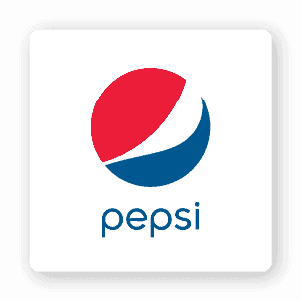
Over to You
Now that you know why circle logos are so useful, it’s time to create your own design! Interested in making a circle logo? Try our logo maker to arrange fonts, imagery, shapes and colors into a logo that truly represents your brand.
